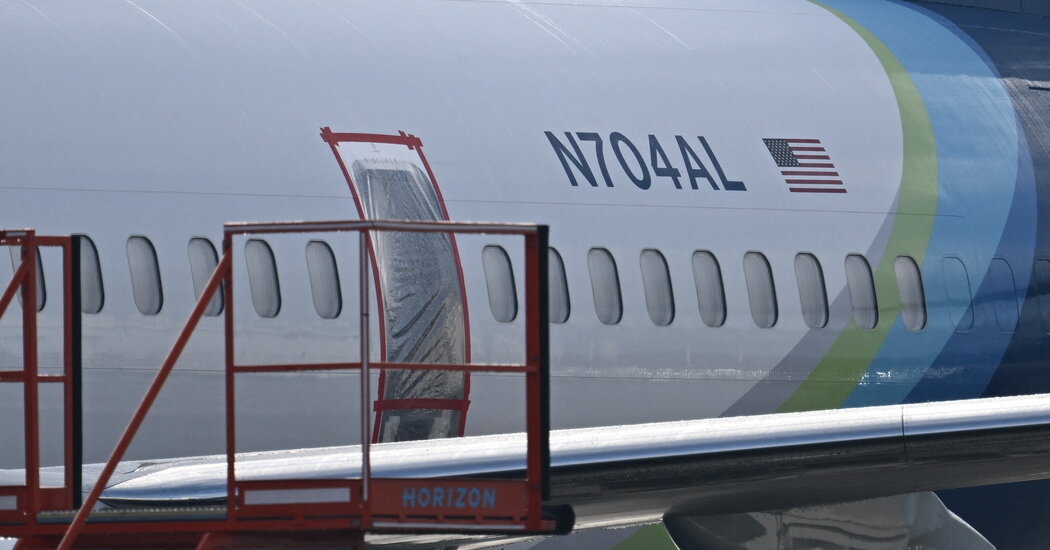Four bolts used to secure the panel that ultimately blew off an Alaska Airlines plane during a flight last month were removed — and appear not to have been replaced — at Boeing’s factory in Renton, Wash., according to a preliminary report released Tuesday by the National Transportation Safety Board.
The panel, known as a door plug, was opened to repair damaged rivets on the plane’s body, known as the fuselage. The report did not say who removed the bolts keeping the door plug in place. But the safety board said it appeared that not all the bolts were put back once the door was reinstalled on the plane after the rivets had been repaired.
As evidence, the N.T.S.B. provided a photograph of the door plug after it was reinstalled but before the plane’s interior was restored. In the image, three of the four bolts appear to be missing. The location of the fourth bolt is covered with insulation.
The report said the image had been attached to “a text message between Boeing team members on September 19, 2023.” The Boeing employees “were discussing interior restoration after the rivet rework was completed during second shift operations that day,” the report said.
The safety board said there was no evidence that the plug was opened again after it left Boeing’s factory. The plane was delivered to Alaska Airlines at the end of October.
The report intensifies the scrutiny on Boeing, which has been scrambling for weeks to contain the fallout from the incident, and it raises fresh questions about whether the company did enough to improve safety after two fatal crashes of 737 Max 8 planes in 2018 and 2019. It also answers critical questions about why the door plug detached shortly after Alaska Airlines Flight 1282 took off from Portland International Airport in Oregon.
Almost immediately, the Alaska Airlines incident prompted the Federal Aviation Administration to ground some 737 Max 9 jets, snarling flight schedules for days at Alaska and United Airlines, the two U.S. carriers that fly the model.
The F.A.A. has also indefinitely limited Boeing’s ambitious plans to increase production of all Max jets, miring the company in uncertainty. The company had planned to churn out 42 jets a month this year and 50 a month next year, but it will instead hold steady at 38, possibly for many months. Boeing executives declined last week to provide a financial forecast for the year, citing the incident and a need to focus on safety.
Furious airline executives have taken…
Click Here to Read the Full Original Article at NYT > Travel…
